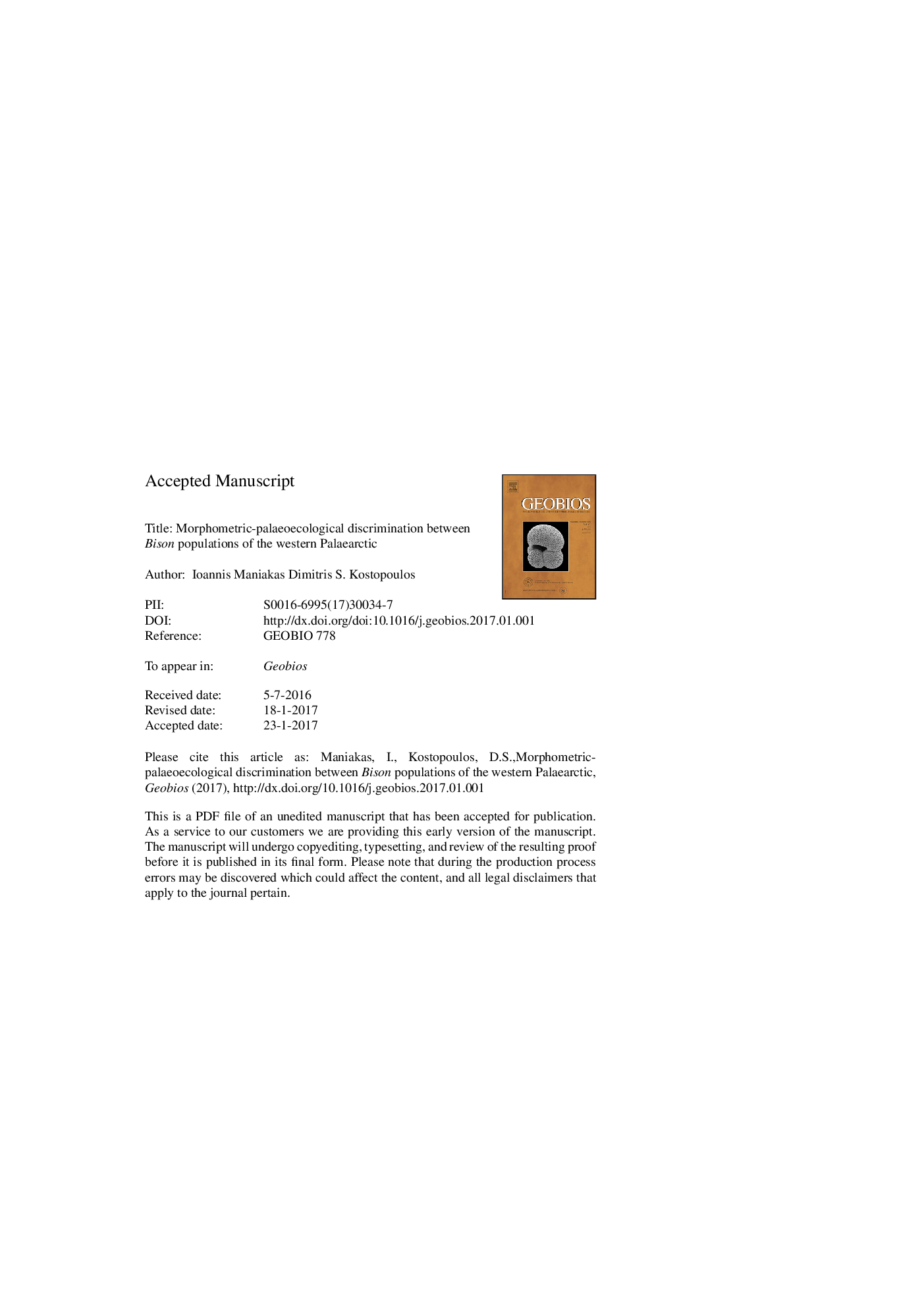| کد مقاله | کد نشریه | سال انتشار | مقاله انگلیسی | نسخه تمام متن |
|---|---|---|---|---|
| 5788135 | 1414220 | 2017 | 53 صفحه PDF | دانلود رایگان |
عنوان انگلیسی مقاله ISI
Morphometric-palaeoecological discrimination between Bison populations of the western Palaearctic
ترجمه فارسی عنوان
تبعیض بین مورفومتریک و پالئوائوکولوژیک بین جمعیت بیستون در پالایارکتیک غربی
دانلود مقاله + سفارش ترجمه
دانلود مقاله ISI انگلیسی
رایگان برای ایرانیان
کلمات کلیدی
موضوعات مرتبط
مهندسی و علوم پایه
علوم زمین و سیارات
فسیل شناسی
چکیده انگلیسی
The present study outlines a comprehensive chrono-spatial framework of the palaeoecological adaptations among several western Palaearctic Bison populations. Possibly arrived during the middle early Pleistocene (late Villafranchian), bisons were present with various morphotypes for more than 1.5 million years in the European mammalian palaeocommunities. Based on dental wear and postcranial morphological traits, bisons can be attributed to distinct size classes and shape trends, associated with distinct feeding and locomotor adaptations across regional provinces and time intervals. During the progressively cooler and more arid climate conditions towards the late Pleistocene, a body mass increase and a significant distal limb elongation are recorded. After the last glacial climatic deterioration, the restoration of a more temperate climate and the expansion of woodlands triggered the general size decrease and limb shortening towards the beginning of the Holocene, both reflected in extant Holarctic bisons. The phenotypic diversity, imprinted in further limb structure alterations, was driven by climatic instability and landscape vegetational heterogeneity. The morphological variability among early Pleistocene forms can be attributed to evolutionary processes or most likely multiple Bison invasions at that time. The vast majority of Pleistocene European bisons primarily inhabited relatively open and dry environments, suited for grazing though they were able to exploid a variety of open and fairly wooded habitats, consuming a broad vegetational spectrum. In contrast, the increasing arid character of the southeastern part of Epivillafranchian Europe resulted in periodically harsh substrate and a more grazing specialized feeding mode.
ناشر
Database: Elsevier - ScienceDirect (ساینس دایرکت)
Journal: Geobios - Volume 50, Issue 2, MarchâApril 2017, Pages 155-171
Journal: Geobios - Volume 50, Issue 2, MarchâApril 2017, Pages 155-171
نویسندگان
Ioannis Maniakas, Dimitris S. Kostopoulos,
